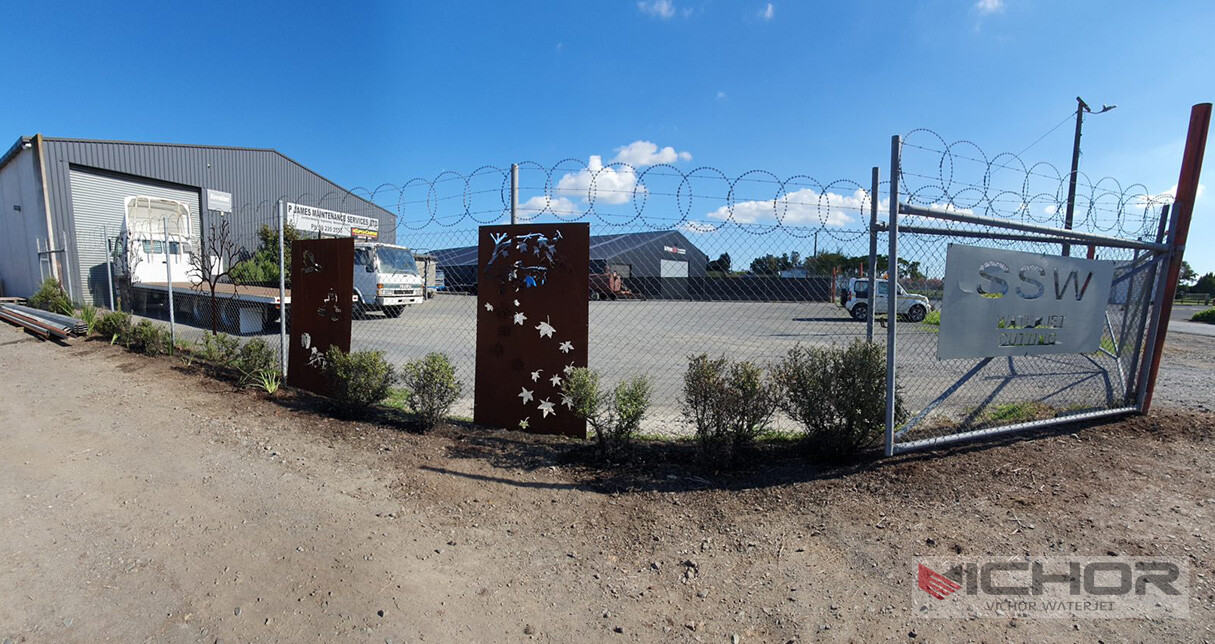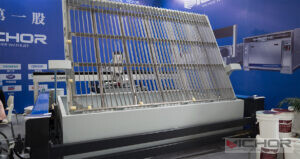
7 Critical Aspects of Water Jet Metal Cutting Service You Should Know
When it comes to precision manufacturing and fabrication, the water jet metal cutting service has revolutionized how industries handle metal components. Imagine a tool that slices through thick steel with the ease of a hot knife through butter, but without the heat. That’s the power of water jet technology. This method isn’t just another cutting technique; it’s a game-changer for businesses seeking accuracy, efficiency, and versatility. In this article, we’ll dive into the essential facets of water jet metal cutting service, explaining why it’s become a go-to solution for everything from aerospace to automotive sectors. Whether you’re a seasoned engineer or a curious entrepreneur, understanding these key points will help you make informed decisions for your projects. Let’s explore how this service can elevate your production processes.
What is Water Jet Metal Cutting Service?
Water jet metal cutting service involves using a high-pressure stream of water, often combined with abrasive materials like garnet, to cut through various types of metal. This process is purely mechanical, relying on the force of water accelerated to supersonic speeds to erode the material. Unlike traditional methods that use heat, a water jet metal cutting service operates at room temperature, preventing thermal distortion and preserving the metal’s inherent properties. This makes it ideal for sensitive applications where heat could compromise integrity. Typically, the service is provided by specialized facilities equipped with advanced CNC (Computer Numerical Control) systems, ensuring precise cuts based on digital designs. From stainless steel to titanium, a water jet metal cutting service handles a wide range of metals, offering a clean, burr-free finish that reduces the need for secondary processing. It’s a versatile solution that caters to industries requiring intricate shapes and tight tolerances, making it a cornerstone of modern manufacturing.
How Water Jet Metal Cutting Works
The mechanics behind a water jet metal cutting service are both simple and sophisticated. It starts with a high-pressure pump that pressurizes water to levels exceeding 60,000 psi (pounds per square inch). This pressurized water is then forced through a small orifice, typically made of diamond or sapphire, creating a narrow, high-velocity jet. For cutting harder metals, an abrasive material is introduced into the stream, enhancing its cutting power. The abrasive water jet can slice through metals up to several inches thick with remarkable precision. The entire process is controlled by CNC technology, which guides the jet along predefined paths based on CAD (Computer-Aided Design) files. This automation ensures repeatability and accuracy, allowing for complex geometries and fine details. One key advantage is the cold-cutting nature of the water jet metal cutting service, which eliminates heat-affected zones (HAZ) that can weaken metal structures. Additionally, the service minimizes material waste since the narrow kerf (the width of the cut) conserves raw materials. This efficiency not only saves costs but also supports sustainable practices by reducing scrap.
Advantages of Using Water Jet Metal Cutting Service
Opting for a water jet metal cutting service brings numerous benefits that set it apart from other cutting methods. First and foremost is the absence of heat input, which prevents warping, hardening, or micro-cracking in metals. This is crucial for materials that are sensitive to temperature changes, such as aluminum or copper. Secondly, the service offers exceptional precision, with tolerances as tight as ±0.005 inches, enabling the production of intricate parts without additional finishing. Another advantage is its versatility; a water jet metal cutting service can handle a diverse array of metals, including hardened steel, brass, and exotic alloys, without the need for tool changes. This flexibility extends to cutting thicknesses, ranging from thin sheets to blocks over 6 inches thick. Environmentally, it’s a greener option since it uses water and natural abrasives, producing no hazardous fumes or waste. Moreover, the process is safe and quiet compared to plasma or laser cutting, reducing workplace risks. Overall, a water jet metal cutting service enhances productivity by speeding up turnaround times and lowering operational costs through reduced material waste and minimal post-processing.
Applications of Water Jet Metal Cutting in Industry
The water jet metal cutting service finds applications across a broad spectrum of industries due to its adaptability and precision. In the aerospace sector, it’s used to fabricate critical components like turbine blades and structural parts, where exact tolerances and material integrity are non-negotiable. The automotive industry relies on this service for producing custom brackets, engine parts, and prototypes, benefiting from its ability to cut complex shapes quickly. In construction and architecture, a water jet metal cutting service creates decorative metalwork, facades, and structural elements with intricate designs that other methods can’t achieve. The energy sector, including oil and gas, utilizes it for cutting pipes, valves, and other heavy-duty components resistant to corrosion. Even the medical field employs water jet cutting for manufacturing surgical instruments and implants, thanks to its sterile, precise nature. Additionally, art and design professionals use the service for metal sculptures and jewelry, highlighting its artistic potential. This widespread adoption underscores how a water jet metal cutting service drives innovation by meeting diverse needs without compromising on quality or efficiency.
Key Considerations When Choosing a Water Jet Metal Cutting Service
Selecting the right water jet metal cutting service requires careful evaluation to ensure it aligns with your project requirements. Start by assessing the provider’s equipment and technology; look for modern CNC systems and high-pressure pumps capable of handling your specific metal types and thicknesses. Experience matters too—a service with a proven track record in your industry will likely deliver better results. Check for certifications like ISO standards, which indicate adherence to quality and safety protocols. Another factor is turnaround time; a reliable water jet metal cutting service should offer flexible scheduling to meet deadlines without sacrificing accuracy. Cost is always a consideration, but remember that the initial price might be offset by savings from reduced waste and secondary processing. Inquire about their material handling capabilities, such as whether they can source metals or work with your supplied materials. Communication and customer support are vital; choose a service that provides clear updates and design assistance. Lastly, review their portfolio or case studies to gauge their expertise in projects similar to yours. By focusing on these aspects, you can partner with a water jet metal cutting service that ensures optimal outcomes for your metal fabrication needs.

Maintenance and Safety Aspects of Water Jet Cutting
While a water jet metal cutting service is highly efficient, proper maintenance and safety protocols are essential for long-term performance. Regular upkeep of the high-pressure pump, nozzles, and abrasive delivery systems prevents downtime and ensures consistent cut quality. For instance, orifice and focusing tubes need periodic replacement due to wear from abrasive materials. Water quality is also critical; using filtered water extends equipment life by reducing mineral buildup. Safety-wise, operators must wear protective gear, including goggles and gloves, to guard against high-pressure streams and flying debris. The work area should be enclosed to contain splashes, and emergency stop mechanisms must be readily accessible. Training is crucial for personnel handling the equipment, covering aspects like pressure adjustments and troubleshooting. Additionally, a water jet metal cutting service should follow environmental guidelines for water recycling and abrasive disposal to minimize ecological impact. By prioritizing maintenance and safety, businesses can maximize the benefits of their water jet metal cutting service while ensuring a secure working environment.
Future Trends in Water Jet Metal Cutting Service
The future of water jet metal cutting service is shaped by technological advancements that enhance precision, speed, and sustainability. Innovations like intelligent CNC systems with AI integration are making the process smarter, allowing for real-time adjustments and error detection. Robotics are being incorporated to automate loading and unloading, boosting efficiency in high-volume projects. There’s also a growing emphasis on eco-friendly practices, such as developing recyclable abrasives and water reclamation systems to reduce waste. Another trend is the integration of 3D scanning with water jet cutting, enabling precise repairs and modifications on existing metal parts. As industries demand faster turnaround, we’re seeing improvements in pump technology that increase pressure levels for quicker cuts without compromising quality. The water jet metal cutting service is also expanding into hybrid methods, combining with lasers or plasma for specialized applications. These developments promise to make the service more accessible and cost-effective, catering to emerging markets like renewable energy and electric vehicles. By staying abreast of these trends, businesses can leverage a water jet metal cutting service to stay competitive in a rapidly evolving landscape.
In summary, the water jet metal cutting service is a versatile, precise, and efficient solution for modern metal fabrication. From its cold-cutting technology to its wide-ranging applications, it offers distinct advantages over traditional methods. By understanding its workings, benefits, and key selection criteria, you can harness this service to improve your production outcomes. As technology evolves, the water jet metal cutting service will continue to drive innovation across industries. If you’re considering this service for your next project, focus on partnering with a reputable provider to unlock its full potential.
Frequently Asked Questions
Q1: What types of metals can be cut using a water jet metal cutting service?
A1: A water jet metal cutting service can handle a wide variety of metals, including stainless steel, aluminum, titanium, brass, copper, and hardened alloys. The process is effective for both thin sheets and thick plates, up to several inches in depth, without altering the metal’s properties.
Q2: How does water jet cutting compare to laser or plasma cutting in terms of cost?
A2: While initial costs for a water jet metal cutting service might be higher due to equipment and abrasive expenses, it often proves cost-effective in the long run by eliminating heat-related distortions and reducing the need for secondary finishing. Laser and plasma cutting may be faster for thin metals but can incur additional costs for heat damage repair.
Q3: Is the water jet metal cutting service environmentally friendly?
A3: Yes, the water jet metal cutting service is considered environmentally friendly because it uses water and natural abrasives, producing no harmful gases or toxic byproducts. Many services also implement water recycling systems and proper waste management to minimize ecological impact.
Q4: What is the typical accuracy and tolerance level achievable with water jet cutting?
A4: A high-quality water jet metal cutting service can achiev
e tolerances as precise as ±0.005 inches, with the ability to produce intricate designs and sharp corners. The accuracy depends on factors like material type, thickness, and machine calibration, but it generally surpasses many traditional cutting methods.
Q5: Can water jet cutting be used for materials other than metal?
A5: Absolutely! Besides metals, a water jet metal cutting service often extends to cutting materials like glass, stone, composites, rubber, and plastics. This versatility makes it a popular choice for diverse industries, from construction to art, without requiring significant process adjustments.
continue reading
Related Posts
- 1352 words6.8 min read
- 1378 words6.9 min read



